For the month of March, Women’s History Month, we will be celebrating our heroes in health & healthcare: from doctors to activists, midwives to scientists. Whether they’ve changed the dialogue surrounding our bodies, pioneered their industry, or changed the way we practice medicine itself; our heroes know no bounds and inspire us to be our best selves.
Elizabeth Blackwell: Physician
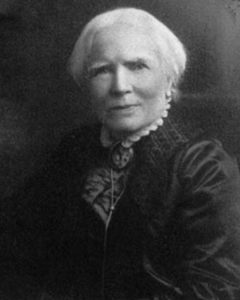
Elizabeth Blackwell became the very first female doctor in the U.S. back in 1849.
Ironically, she originally felt repulsed by the idea of medicine, saying “the thought of dwelling on the physical structure of the body and its various ailments filled me with disgust.” It wasn’t until her dying friend told her that she felt she would have been spared her worst suffering if her physician had been a woman that Elizabeth decided to become a doctor. What better way to fix an imbalance in medicine than to dive in and get the job done yourself!?
2. Dr. Rachel Levine: Pennsylvania Physician General
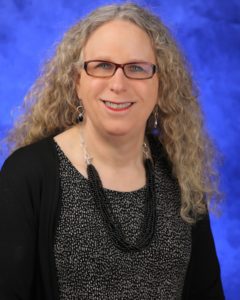
Dr. Levine’s appointment as Pennsylvania Physician General, PA’s top Doc, was unanimously unopposed by both parties in the state senate – a political rarity to say the least. What makes this even more groundbreaking? Dr. Levine also happens to be transgender, making her one of only a small handful of transgender government officials in the United States. This is actually one of the things Levine is most proud of, “they were able to look solely at my professional qualifications, which is exactly how it should be.” she has said.
Over the years she has worked to improve access to health care for the LGBTQ community and has spoken at hospitals and medical schools about how the medical profession can better serve vulnerable communities. Levine says, “We need to do a better job educating medical students about LGBT issues and transgender medicine.” She was recently recognized as one of NBC’s Pride 30, a national list of 30 people who are both members of + making a difference in the lives of the LGBTQ community.
3. Alice Ball: Chemist
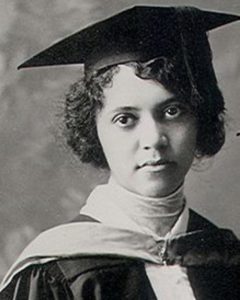
Alice Ball was a chemist who, in her early twenties, developed the most effective treatment for leprosy which was used for decades. Prior to Ball’s discovery, traditional healers in India and parts of Southeast Asia used a specific oil from the Chaulmoogra tree to treat leprosy either through ingestion or topically on the skin. They weren’t able to administer it intravenously as the oil was incredibly thick which meant injections were incredibly painful. Ultimately, this would be the key.
Enter: Alice Ball. She was a chemist with dual bachelor’s degrees from the University of Washington in pharmaceutical chemistry as well as in pharmacy. She moved to Hawaii to do graduate work and became the first African American as well as the first woman to graduate from the University of Hawaii with a master’s degree.
In 1916, Ball was able to successfully isolate the fatty acid compounds from the oil (now known to be the antimicrobial hydnocarpic acid) and made the first preparation of a water-soluble, injectable form of chaulmoogra oil. The treatment was used globally for 30 years.
Ball died when she was 24 years old, just one year after her discovery. The President of the University of Hawaii, Arthur Dean, “continued her studies” and claimed he had made the discovery himself and even went on to call it the “Dean Method.” In 2000, almost a century after Ball’s discovery, the University of Hawaii officially, and finally, recognized Ball for her groundbreaking discovery.
4. Catherine Harry: Activist

Catherine is an Activist and Vlogger in her 20s from Cambodia. She uses both Facebook and YouTube as platforms to educate fellow Cambodians about feminism, sexual and reproductive health, as well as other topics not usually openly discussed in her country like masturbation, menstruation, and abortion.
She believes the culture of silence surrounding these issues disempowers women. “I want to open a discussion about those things – it’s time to start talking about topics that we are not supposed to talk about because all of them suppress women,” she says.
Her videos receive a ton of attention, amassing millions of views on each post. Catherine says Facebook is one of the few spaces young people can speak freely, ask questions and participate in a conversation they wouldn’t dare to have with their friends face to face. “Because they can watch [the videos] on their smartphone in their bedroom and then they can comment anonymously, that’s the way they can get involved in the conversation,” she says.
5. Simone de Beauvoir: Writer, existentialist philosopher, political activist, feminist + social theorist
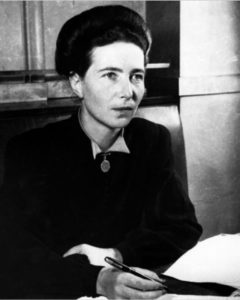
“Man is defined as a human being and a woman as a female – whenever she behaves as a human being she is said to imitate the male.” Simone was a french existential feminist and writer who in 1949 penned “The Second Sex;” a groundbreaking essay on the oppression of women.
Beauvoir argued that abstract freedom (For example, the right to vote) would make no difference to a woman who is deprived of health, education, and money to take advantage of such rights.
At the time “The Second Sex” was controversial, to say the least. However, despite being placed on the Index of Forbidden Books by the Vatican, de Beauvoir’s essay remained a source of inspiration and insight for countless women over the years.
Today, Simone is often seen as a pioneer of the modern feminist movement.
6. Michelle Obama: Lawyer, Writer, Activist
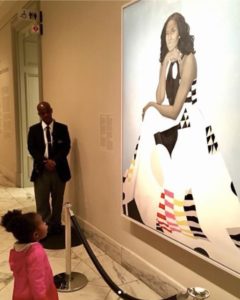
During her 8 years at the White House as the First African American First Lady, Michelle Obama worked incredibly hard to change so many lives in so many ways (we miss you, come back) but we’re going to focus on how she promoted both physical + mental health during her time as FLOTUS.
In 2010 she launched “Let’s Move,” an initiative to raise awareness about childhood obesity and to encourage more physical activity, as well as urge schools to provide access to healthier foods. This was the first time that this issue had been taken on as such a high priority by a presidential administration. She also championed the Healthy, Hunger-Free Kids Act which was able to get schools to serve healthier foods and reduce the costs of lunches for low-income children. Remember when ketchup was considered a vegetable?
Obama was also an advocate for girls and women’s health, education, and rights. Launched by both Michelle and Barack Obama, the “Let Girls Learn” initiative aimed to reduce the barriers girls around the world face to getting quality education.
7. Florence Nightingale: Founder of Modern Nursing
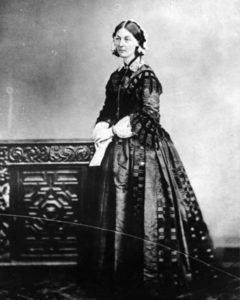
Born into a wealthy English family in 1820, Florence Nightingale was expected to marry a wealthy man and tend to the home. At the time, nursing was looked down on by upper social classes. When Nightingale told her parents about her ambitions to become a nurse, they went so far as to forbid her from doing so. Well, they tried to at least.
In 1849, Florence turned down a proposal from a wealthy man. The next year, she was enrolled as a nursing student at an institution in Germany.
Soon after in the 1850s, she took up a nursing job in a hospital in London where she was quickly promoted to superintendent. Around the same time, she volunteered at a second hospital that had a cholera outbreak. The hospital had incredibly unsanitary conditions which led to the rapid spread of the disease and Nightingale made it her mission to improve hygiene practices which significantly lowered the death rate.
In late 1854, Nightingale was asked by the Secretary of War to organize a group of nurses to tend to the soldiers in the Crimea. At that point, the condition of the hospital was so unsanitary that by the time she got there more soldiers were dying from infectious diseases, like typhoid or cholera, than from injuries incurred in battle.
Nightingale set to work. With the help of the nurses and even some patients who were able, she cleaned the hospital from top to bottom and from there on out maintained a high level of cleanliness. She quickly earned the nickname “the Lady with the Lamp,” as she would spend every waking minute caring for the soldiers, making her rounds well into the darkest hours. Her work reduced the hospital’s death rate by two-thirds and sparked worldwide health care reform.
8. Jill Blakeway: Doctor of Acupuncture and Chinese medicine, Author, Speaker, Founder of Yinova
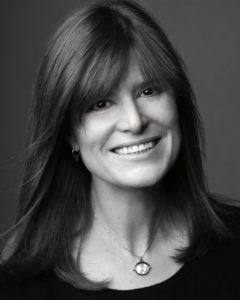
Jill Blakeway is a hero who, as our founder, is incredibly close to our hearts. To be honest, she didn’t want to be featured in this list, because she didn’t think she’d achieved enough, but we over-ruled her!
In 1999, Jill was a single mother with few resources when she had the idea to start Yinova. The center grew, treatment room by treatment room, and now almost 2 decades later, it is one of the largest acupuncture practices in the US and home to a vibrant community of talented practitioners, support staff, and patients.
Jill has always been incredibly passionate about fertility and reproductive health. From irregular menstrual cycles to menopausal hot flashes, and everything in between, Jill has helped countless people over the years to reclaim their bodies and take control of their reproductive health. She is best known for is helping people to conceive, either naturally or by assisting them through IVF. Earning herself the nickname of “fertility goddess” from the New York Times.
Back in 2002, Jill founded the Acupuncture Program at Lutheran Medical Center, one of the earlier examples of successfully integrating Chinese medicine into a western hospital. The program at the time provided care to inpatients in the Labor and Delivery units. Today, the program has grown and now looks after the Neurological/Orthopedic Rehabilitation unit as well.
One of Jill’s skills is translating Chinese medicine for a western audience. Whether she is teaching at a doctorate level, speaking at a TED talk, or showing western doctors the effects of acupuncture; She is able to demystify and communicate the wisdom that underpins Chinese medicine through science, research, and quite honestly, her own results.
In 2009 Jill’s first book, Making Babies, was published and became a bestseller in its genre. She followed that with a book about libido, Sex Again, which was published in 2013 and she’s currently writing a book about the science (and some of the mystery) behind energy healing for Harper Collins. And she’s still here in the office with us most weeks, treating patients and inspiring the team to deliver the kind of open-hearted, patient-centered care Yinova is known for.
9. Dr. Jane Cooke Wright: Physician and Cancer Researcher
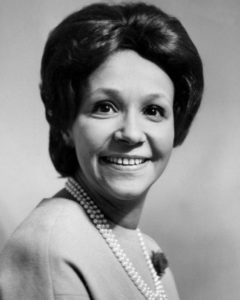
Dr. Jane Cooke Wright was a physician and cancer researcher who defied both gender and racial barriers in a profession long dominated by white men. She dedicated her career to the advancement of cancer treatment and helped make chemotherapy a viable treatment option.
In the 1940s, chemotherapy was thought of as a “last resort,” and was still in the experimental stages of drug development. As a result, the types of drugs available (as well as their prescribed dosages) weren’t well defined.
From an already distinguished medical family, Wright began her career as a researcher working alongside her father at a cancer center he established at Harlem Hospital in New York.
Together, Jane and her father were one of the first groups of researchers to discover the use of nitrogen-mustard as a treatment for cancer that led to remissions in patients with several major cancer types. Before this, many blood cancers were seen as incurable. When her father died in 1952, She took over as director of the Harlem Hospital Cancer Research Foundation.
In 1967, Dr. Wright became a professor of surgery at New York Medical College. At the time she was the highest-ranking African American woman in a United States medical institution.
Her contributions to the research of chemotherapy have helped to change the face of medicine and continue to be used to this day.
10. Ina May Gaskin: Midwife, Author
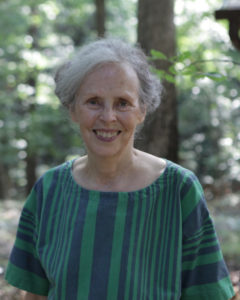
Often referred to as the Mother of Midwifery, Gaskin’s work challenged our accepted notions of what a “normal” birth should be and encouraged women to believe in the strength and intuition of their bodies, and not to rely on what an OB dictates. She firmly believed that giving birth should be looked at as a normal life experience, and not a scary medical event.
In 1971 Gaskin founded a commune called The Farm in Tennessee. Around the same time, she created The Farm Midwifery Center, one of the first out-of-hospital birthing centers in the United States. Family and friends were commonly in attendance and were even encouraged to take an active role in the birth. Gaskin has been credited with the emergence and popularization of direct-entry midwifery (meaning, not training as a nurse first) in the U.S.
According to Carol Lorente, Gaskin’s work might not have had the impact it did, had it not been for her book Spiritual Midwifery which was published in 1977. Lorente writes, “Considered a seminal work, it presented pregnancy, childbirth, and breastfeeding/chestfeeding from a fresh, natural, and spiritual perspective, rather than the standard clinical viewpoint. In-home birth and midwifery circles, it made her a household name, and a widely respected teacher and writer.” From that point on, Gaskin was often asked to speak at midwifery events around the world and is still to this day admired by many natural birthing practitioners.
11. Virginia Apgar: Obstetrical Anesthesiologist, Professor, and Creator of the Apgar Score
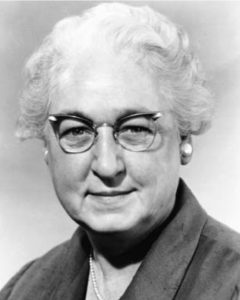
It has been said that “every baby born in a modern hospital anywhere in the world is looked at first through the eyes of Virginia Apgar.” Back in the 1950s, Dr. Virginia Apgar created a quick and easy method for assessing newborn viability. This was incredibly important because, despite more and more women having babies in hospitals, newborn mortality rates remained high. Now known as the Apgar Score, her method not only reduced these mortality rates but also laid the foundations for proper care of newborn infants, otherwise known as neonatology. While Dr. Apgar is best known for this achievement, she was also a leader in both the emerging field of anesthesiology as well as in teratology, the study of birth defects.
Born in 1909, Apgar grew up at a time when women had tremendous trouble entering the medical field, and even then, with a medical degree behind them, they were often pushed into obscure branches of medicine or discouraged by their male colleagues.
She began her medical training at the College of Physicians and Surgeons at Columbia University in 1929, one of nine women in a class on ninety. Despite Apgar’s clear talents as a surgeon, Dr. Alan Whipple, the chair of surgery, discouraged her from pursuing surgery as a career and instead insisted that Apgar become an anesthesiologist. Ironically, despite the fact that anesthesiology was not a recognized specialty at the time, this branch of medicine would ultimately lead Apgar down the path to changing medicine forever.
In 1949, Apgar became the first woman to become a full professor at the Columbia University College of Physicians and Surgeons. She also began to research how anesthesia affected mothers and babies, an area of study that was neglected at the time. “As late as the 1940s, delivery-room doctors focused on mothers and paid little attention to babies,” Melinda Beck, a friend of Apgar’s recalled. “Those who were small and struggling were often left to die, since doctors assumed little could be done for them.” That all changed when one day a medical student of Apgar’s asked her how she evaluates the health of a newborn baby. She jotted down a quick list of five important things to look out for: the baby’s heart rate, the appearance of the baby’s skin, how quickly the baby is breathing, as well as the level of movement and reflexes.
Apgar wondered if this checklist could, on a larger scale, help others assess babies right after being born. She tried it out, and the rest is history. The Apgar score works on a scale from 0-10, with 10 being a perfectly healthy baby with points being scored throughout the 5 categories. Nowadays, most, if not pretty close to all, babies are born with an Apgar score. Her score is credited with a steady increase in infant survival rates, and her work with new babies helped her, and subsequently, the whole world, discover ways to detect birth defects within moments of a baby’s birth.
12. Brené Brown: Professor, Researcher, Author, Public Speaker
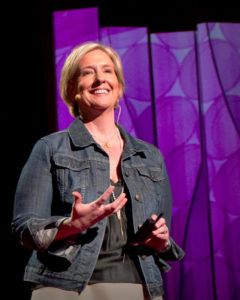 Brené Brown is a professor, researcher, author, speaker, and mental health advocate. Her research and books on vulnerability, empathy, shame, and wholehearted living, as well as the courage to be authentic, have been incredibly empowering and life-affirming for so many people both in the wellness world and beyond. Her words are so impactful in fact, that her TED talk, The Power of Vulnerability, is one of the top five most viewed TED talks. Ever. It has 30 million views, seriously go watch it right now.
Brené Brown is a professor, researcher, author, speaker, and mental health advocate. Her research and books on vulnerability, empathy, shame, and wholehearted living, as well as the courage to be authentic, have been incredibly empowering and life-affirming for so many people both in the wellness world and beyond. Her words are so impactful in fact, that her TED talk, The Power of Vulnerability, is one of the top five most viewed TED talks. Ever. It has 30 million views, seriously go watch it right now.
Brené’s ultimate goal is to teach us how to live our lives from a place of authenticity and worthiness by encouraging us to embrace our vulnerabilities and our imperfections. In her own words, “Wholehearted living is about engaging with our lives from a place of worthiness. It means cultivating the courage, compassion, and connection to wake up in the morning and think, ‘No matter what gets done and how much is left undone, I am enough.’ It’s going to bed at night thinking, ‘Yes, I am imperfect and vulnerable and sometimes afraid, but that doesn’t change the truth that I am also brave and worthy of love and belonging.”
13. Maria Montessori: Physician and Educator
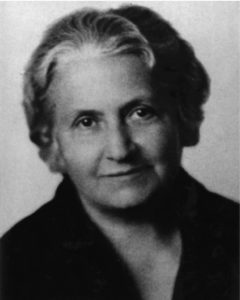 Maria Montessori was both a physician and an educator who developed the Montessori Method of teaching, which suggests that children learn best when their environment supports their natural desire to learn skills and knowledge. Her method discourages traditional competitive measurements of achievement (like grades or tests) and instead focuses on the individual progress and development of each child.
Maria Montessori was both a physician and an educator who developed the Montessori Method of teaching, which suggests that children learn best when their environment supports their natural desire to learn skills and knowledge. Her method discourages traditional competitive measurements of achievement (like grades or tests) and instead focuses on the individual progress and development of each child.
Montessori was born in 1870 in Ancona, Italy; not too long after our friend, and number 7 on this list, Florence Nightingale. Montessori faced very similar challenges in trying to enter the medical field, as women entering the medical world was frowned upon. Everyone from her teachers to her own father tried to stand in her way and discourage her from pursuing a career in medicine; however, despite their best efforts, Maria graduated (with highest honors we might add!) from the Medical School of the University of Rome. She was the first female physician in Italy.
She went on to teach at the Medical School of the University of Rome, which is where she first came into more frequent contact with children. Through the school were free clinics for the “deficient and insane” children of the city, most of whom would be diagnosed in the twenty-first century as autistic or mentally disabled.
These kids were kept in bleak settings and treated poorly by the staff members of the hospital. As Montessori got to know these kids better, she recognized that the reason they weren’t thriving wasn’t that they lacked intelligence, but because they were in an environment that didn’t allow them to grow. She changed all of that by creating a program that kept the children stimulated, gave them purposeful activities, and helped boost their self-esteem.
The Montessori theory is still used to this day. In fact, scientists have found that her approach is more likely to produce more mature, creative, and socially adept children.
14. Jane Goodall: Primatologist and Anthropologist
Jane Goodall is a conservationist born in England in 1934 who the age of 26 set off into the jungle to study Chimpanzees. Over half a century later, with countless books and movies about her, she is still going strong and teaching us more than we could have imagined about what it is to be human. Through her inspiring work studying our closest genetic cousins (98.8%!!), she has not only been a champion of the conservation movement but has also helped us see the connections between the natural environment, human society, and public & personal health. Her message that we are connected at a cellular and universal level really resonates with us!
At 84 years old Jane is still on the road educating people young and old about Chimpanzees and the world we all share. The Jane Goodall Institute helps communities large and small develop important local educational and agricultural programs that allow them to work more sustainably within their environment. One of these programs, Roots, and Shoots works directly with young people to foster a generation of informed citizens who see we are all able to live healthier lives through action that protects the world.
Fun fact: when Dr. Jane was just 1 year old her parents gave her a stuffed animal that looked like a monkey. All their friends thought it was a bad idea – that it would scare her and give her nightmares. Instead, Jubilee became Jane’s best friend and 83 years later the pair are still together.
15. Mary Fisher: Activist and Artist
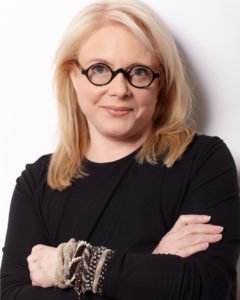
Mary Fisher is an AIDS activist who, in the early ’90s, made a huge impact in terms of breaking down the stigma surrounding HIV/AIDs.
Mary contracted HIV from her second husband after he cheated on her with her best friend. From that moment on, she decided to be open about her illness and subsequently became an outspoken HIV/AIDS activist for the prevention, education, and for compassionate treatment of people with HIV and AIDS.
The Detroit Free Press published her story in 1992, and soon after she was invited to speak at the 1992 Republican National Convention in Houston, Texas. There, she encouraged the Republican Party to handle the AIDS crisis with compassion. One of the reasons her speech was so striking was because, as a white blonde woman, she did not fit the unfair stereotype of someone living with AIDS/HIV that people commonly held at the time. That, in combination with her powerful message, was so impactful that it is still to this day referred to as “one of the best American speeches of the 20th Century.”
16. Andrea Evangelina Rodríguez Perozo: Physician
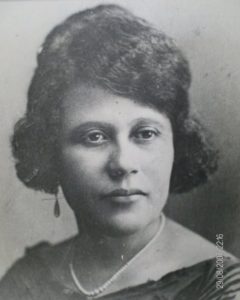 In 1909, Evangelina Rodríguez became the first female physician in the Dominican Republic. She spent her time giving medical attention to people from poor communities for free or for very little money. She focused a lot of her energy on supporting women and women’s health; she offered pre and post-natal OB/GYN services and she created a support center for mothers in need. She was also an activist and advocated for family planning and in-school sex education. Through her activism, she was able to bring to light broader issues in Dominican society regarding race, gender, and class that contributed to inequalities faced by the people she treated. She believed so strongly in what she fought for that, despite her efforts putting her in danger with dictator Rafael Trujillo, she continued to fight for what she felt was right.
In 1909, Evangelina Rodríguez became the first female physician in the Dominican Republic. She spent her time giving medical attention to people from poor communities for free or for very little money. She focused a lot of her energy on supporting women and women’s health; she offered pre and post-natal OB/GYN services and she created a support center for mothers in need. She was also an activist and advocated for family planning and in-school sex education. Through her activism, she was able to bring to light broader issues in Dominican society regarding race, gender, and class that contributed to inequalities faced by the people she treated. She believed so strongly in what she fought for that, despite her efforts putting her in danger with dictator Rafael Trujillo, she continued to fight for what she felt was right.
17. Rachel Carson: Marine Biologist, Author and Environmentalist
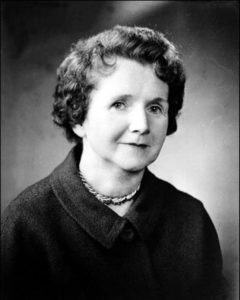 Rachel Carson was a marine biologist and an author who, back in the 1960s, single-handedly started a global environmental movement. Let’s let that sink in for a moment.
Rachel Carson was a marine biologist and an author who, back in the 1960s, single-handedly started a global environmental movement. Let’s let that sink in for a moment.
Carson loved nature and science and studied to become a Zoologist in 1932. She began her career as a writer, creating and editing pamphlets on conservation and natural resources as well as articles for several scientific publications.
However, her attention shifted after World War II. Disturbed by the high volume of synthetic chemical pesticides used after the war, Carson used her writing skills to bring awareness and effect significant change. In 1962 her book, Silent Spring, was published. She set out to warn the public about the long-term effects of continued misuse of pesticides. She challenged the practices of agricultural scientists and the government and called for a change in the way we viewed the natural world.
This led to Carson being attacked by both the chemical industry and the government, who saw her as an alarmist. That didn’t stop her though. She continued to speak out, warning people that we need to protect the world we live in, as we are a vulnerable part of the natural world subject to the same damage as the rest of the ecosystem.
Carson’s mission to raise awareness was so influential and, honestly, life-saving, that her work eventually inspired the formation of the EPA!
18. Rebecca Lee Crumpler: Physician and Author
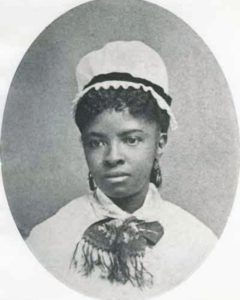 In 1864, a time when advanced education for women was rare, Dr. Crumpler graduated from medical school and became the first African American woman to earn a medical degree in the United States.
In 1864, a time when advanced education for women was rare, Dr. Crumpler graduated from medical school and became the first African American woman to earn a medical degree in the United States.
She started her first medical practice in Boston, but when the war ended in 1865, she moved to Richmond, Virginia to help the freed slaves who otherwise would not have had access to medical care. Racism was still widespread, which made it, in Crumpler’s words: “a proper field for real missionary work.”
A few years later, in 1869, she returned to Boston and created a new practice that centered around caring for women and children. Passionate about women’s health, she went on to write A Book of Medical Discourses: a book for women to provide them with information on how to care for their own health as well as the health of their families.
19. Brenda Milner: British-Canadian brain researcher
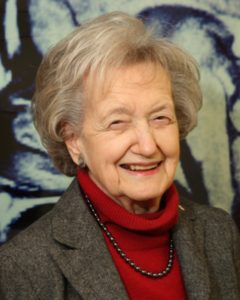 Often referred to as the “founder of neurophysics,” Dr. Brenda Milner, now 99 years old, currently holds more than 20 honorary degrees and continues to work. She is currently a professor in the Department of Neurology and Neurosurgery at McGill University as well as a professor of Psychology at the Montreal Neurological Institute.
Often referred to as the “founder of neurophysics,” Dr. Brenda Milner, now 99 years old, currently holds more than 20 honorary degrees and continues to work. She is currently a professor in the Department of Neurology and Neurosurgery at McGill University as well as a professor of Psychology at the Montreal Neurological Institute.
Dr. Milner received her MA from Cambridge University in 1949. During that time, she also studied at several other universities in Canada. Seriously, this woman is a powerhouse. In 1944 she joined the Institut de Psychologie at the Université de Montréal and in 1950, she continued her studies at the Montreal Neurological Institute as well as at McGill University. By 1952 she had earned her Ph.D. in experimental psychology from McGill University.
She continued her studies at the Montreal Neurological Institute and also taught as a Professor at McGill University. Dr. Milner soon became one of the pioneers of neuropsychology. Her detailed and methodical long-term studies of patients both before and after well-documented brain excisions, particularly in epilepsy cases, have added substantially to the scientific understanding of the structure of the brain. She also discovered and demonstrated that our brains have multiple memory systems that govern different functions, such as motor skills or language. Her work contributed to a greater understanding of how the brain works and she is, quite rightly, considered to be one of the greatest neuroscientists of the 20th century.
20. Antonia Novello: Former Surgeon General of the United States
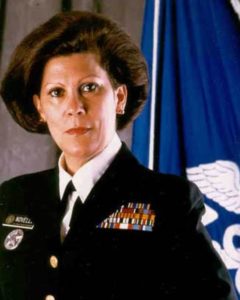 Dr. Antonia Novello was Born in Puerto Rico and overcame childhood poverty and illness to become a leading doctor in America. In 1990 Antonia was appointed United States Surgeon General by George Bush. Becoming not only the first woman to hold the office but also the first Hispanic
Dr. Antonia Novello was Born in Puerto Rico and overcame childhood poverty and illness to become a leading doctor in America. In 1990 Antonia was appointed United States Surgeon General by George Bush. Becoming not only the first woman to hold the office but also the first Hispanic
During her time in office, Dr. Novello took a particular interest in the health of young people, women, and minorities. Regularly speaking out against underage drinking, smoking, and drug abuse as well as being an advocate for childhood immunization and injury prevention and played an active role in alerting the nation to the increasing incidence of the AIDS virus among women.
After serving as Surgeon General, Dr. Novello was a special representative to United Nations Children’s Fund from 1993-to 1996 and is currently the commissioner of health for the state of New York one of the largest public health agencies in the country.
21. Dr. Helen Octavia Dickens: Physician and Professor
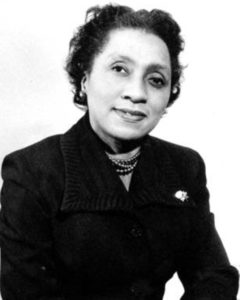 Dr. Helen Octavia Dickens was born in 1909, in Dayton, Ohio to Charles Warren Dickens, a former slave and water boy during the Civil War, and Daisy Jane Dickens, a domestic servant to the Reynolds family of paper manufacturers. Though her father was an educated man (he took his name after meeting the famous English novelist Charles Dickens), social prejudice restricted him to janitorial work. Helen was adamant that the same wouldn’t happen to her despite the abuse that she had encountered from her classmates early on in life.
Dr. Helen Octavia Dickens was born in 1909, in Dayton, Ohio to Charles Warren Dickens, a former slave and water boy during the Civil War, and Daisy Jane Dickens, a domestic servant to the Reynolds family of paper manufacturers. Though her father was an educated man (he took his name after meeting the famous English novelist Charles Dickens), social prejudice restricted him to janitorial work. Helen was adamant that the same wouldn’t happen to her despite the abuse that she had encountered from her classmates early on in life.
Helen attended the University of Illinois after Dr. Elizabeth Hill, who was the first African American to graduate from the institution, helped her register. She earned her M.D. in 1934 as the only African American to do so. After completing her internship at Provident Hospital, a predominantly African American and poorly funded hospital in south Chicago, Helen got her first job at Virginia Alexander’s Aspiranto Health Home in Philadelphia in 1935 where she, in addition to her general practice, provided obstetric and gynecologic care.
Following six successful years in Philadelphia, Helen returned to Provident Hospital to complete her residency and specialize in obstetric and gynecology. She completed her MSc and residency in 1945 and 1946 respectively. In addition to reaching the zenith of her field, Helen used her work to educate and empower younger women and led extensive research into teen pregnancy and sexual health issues, for which she was awarded numerous accolades and rewards.
22. Dr. Anandibai Joshee: Physician
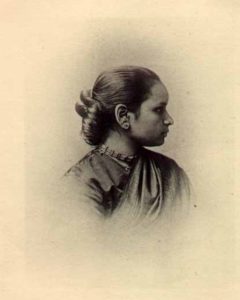 At 9 years old, Yamuna Joshee married Gopalrao Joshi, a widower almost twenty years her senior. As was tradition, the groom gave his bride a new name and he named her Anandibai.
At 9 years old, Yamuna Joshee married Gopalrao Joshi, a widower almost twenty years her senior. As was tradition, the groom gave his bride a new name and he named her Anandibai.
When Anandibai was 14 she gave birth to her only child who tragically died just 10 days later. The medical care that her boy needed for his survival was simply unavailable. This became a turning point in Anandibai’s life and inspired her to become a physician.
At 21 years old, she became the world’s first Indian woman to receive a medical degree.
Less than a year later, she died.
Throughout Anandibai’s life, her husband was always very supportive of her. He was a progressive thinker, which was not very prevalent at the time. He helped her to receive an education, to learn English, and encouraged Anandibai to study medicine.
In the early 1880s, Anandibai’s health began to decline. She suffered from weakness, constant headaches, occasional fever, and, sometimes, breathlessness. In 1883, her husband decided to send Anandibai by herself to America for her medical studies despite her poor health. Though she was nervous to leave, he convinced her to set an example for other women by pursuing higher education.
And off she went. Anandibai traveled from Calcutta to New York by ship. When she arrived, she wrote to the Women’s Medical College of Pennsylvania, which was one of only two women’s medical programs in the world, asking to be admitted and she was.
During her time in the U.S., her health continued to decline. However, despite contracting tuberculosis, she finished her thesis, “Obstetrics among the Aryan Hindus,” and graduated with her Medical Degree on 11 March 1886.
She soon returned to India, receiving a hero’s welcome, and was appointed as the physician-in-charge of the female ward of the local Albert Edward Hospital. Early the next year on 26 February 1887, Anandibai tragically died of consumption.
23. Ida Rolf: Biochemist and Creator of Structural Integration
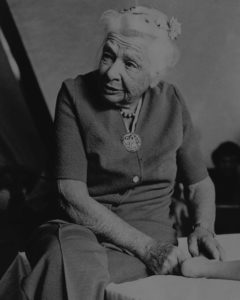 Ida Pauline Rolf received her Ph.D. in biochemistry from the College of Physicians and Surgeons of Columbia University in 1920. She later attended the Rockefeller Institute to study organic chemistry despite her struggles to advance in her field due to gender stereotypes.
Ida Pauline Rolf received her Ph.D. in biochemistry from the College of Physicians and Surgeons of Columbia University in 1920. She later attended the Rockefeller Institute to study organic chemistry despite her struggles to advance in her field due to gender stereotypes.
Ida is the creator of Structural Integration- a non-invasive technique utilized by many practitioners today to align the bone structure in the body. Her pioneering work was born out of her fascination with many forms of alternative healing including homeopathy, osteopathy, chiropractic, and yoga, as well as in an attempt to treat her and her son’s ailment once and for all.
Ida postulated that the body functions at its best when everything is in proper alignment; she believed that imbalances in our structure, caused by things cocking your hip to hold your newborn, having your bag hang on one shoulder, or even just the way you stand, placed tough demands on the body’s pervasive network of soft tissues including our muscles, fascia, tendons, and ligaments. Her life’s work culminated in what we today refer to as Structural Integration – a system of soft tissue manipulation and movement education.
24. Dr. Dorothy Lavinia Brown: Surgeon
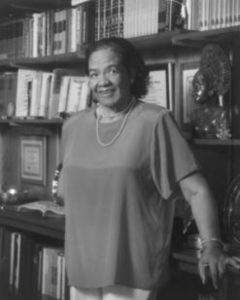 Dr. Dorothy Lavinia Brown was a woman of firsts: the first single woman in Tennessee to be granted the right to become an adoptive parent; the first African American woman to serve in the Tennessee state legislature; and the first African American woman to become a surgeon in the South.
Dr. Dorothy Lavinia Brown was a woman of firsts: the first single woman in Tennessee to be granted the right to become an adoptive parent; the first African American woman to serve in the Tennessee state legislature; and the first African American woman to become a surgeon in the South.
Brown did not have the easiest childhood; her mother abandoned her at a young age causing Dorothy to be left in an orphanage at just a few months old. She stayed there until the age of 13 when her mother tried to reclaim her. Seeing that her new environment with her birth mother wasn’t safe, Dorothy continuously attempted to run away back to the orphanage. Later on, in her teen years, determined to receive an education, she ran away for good and joined as a student at Troy High School. Her principal soon realized that Dorothy didn’t have a home to go to, and arranged a foster home with Lola and Samuel Wesley Redmon who, ultimately, because very supportive and loving figures in her life.
In 1944 she enrolled at Meharry Medical College, in Nashville, Tennessee, and graduated in 48. She then spent a year as an intern at Harlem Hospital where Dorothy had to choose her residency. She knew she wanted to be a surgeon but also knew that would be a challenge. At the time, there were no other black women in general surgery in the South making it so that she had to forge through almost universal resistance. Brown worked through a five-year residency at Meharry and George W. Hubbard Hospital to become Assistant Professor of Surgery in 1955 and the first African American woman to be made a Fellow of the American College of Surgeons. Describing her drive to persevere, Dr. Brown has said “I tried to be…not hard, but durable.”
25. Meika Hollender, Co-Founder and CEO of Sustain
 Meika Hollender is the Co-Founder of Sustain, the leading brand of all-natural, vagina-friendly products. Sustain’s mission is to get every single woman to think with their vagina – to create a world that fosters open, honest, and real conversations about sexual and reproductive health.
Meika Hollender is the Co-Founder of Sustain, the leading brand of all-natural, vagina-friendly products. Sustain’s mission is to get every single woman to think with their vagina – to create a world that fosters open, honest, and real conversations about sexual and reproductive health.
Meika has dedicated her life to women’s sexual health. She saw two major opportunities — first, in all other categories, women were demanding safer products, from food to cosmetics, but for the most intimate of products, the ones going inside of our vaginas, there weren’t safer more natural options. Additionally, sexual wellness products have been forever made by men and marketed to men. What about women? Women buy 40% of condoms but have been completely neglected by the category. Meika founded Sustain because she’s dedicated to change all this. To empower women to take control of their sexual and reproductive health with better, more natural products.
She’s also an activist and works closely with organizations like Planned Parenthood and Women’s Voices for the Earth to create a future that ensures sexual and menstrual equity. Additionally, through Sustain’s dedicated fund 10%4Women, which they started at the company’s inception, Sustain donates 10 percent of their pretax profits to women’s reproductive health organizations (primarily PP).
26. Wafaa El-Sadr: AIDS researcher and Physician
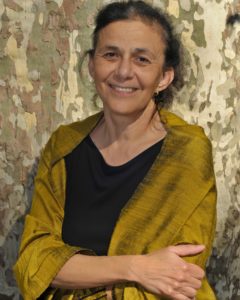 Wafaa El-Sadr has dedicated her career to helping to prevent the spread of infectious diseases, like HIV and Tuberculosis primarily in more underserved populations throughout sub-Saharan Africa and Asia.
Wafaa El-Sadr has dedicated her career to helping to prevent the spread of infectious diseases, like HIV and Tuberculosis primarily in more underserved populations throughout sub-Saharan Africa and Asia.
From 1988 to 2008, El-Sadr led the Division of Infectious Diseases at Harlem Hospital Center where she spent her time developing family-focused and comprehensive services to prevent and treat HIV and tuberculosis.
She is now director of the International Center for AIDS Care and Treatment Programs (ICAP) and it is estimated that she has helped a million HIV patients receive access to the help and services they need.
In 2008, she was awarded a “Genius” grant by the MacArthur committee, who at the time wrote: “Rather than focusing on proximal pathological processes, El-Sadr develops treatment strategies by considering such factors as access to health care, education, social status, and economic stressors.”
She is the director of the Center for Infectious Disease Epidemiologic Research CIDER at Columbia University’s Mailman School of Public Health as well as a Professor at Columbia University.
27. Nancy Dickey: Physician
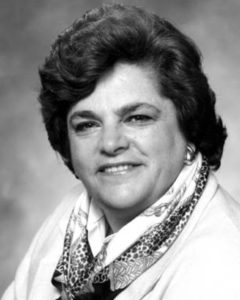 Nancy Dickey was the first woman to be elected president of the American Medical Association. (She was also only 26 years old when she took on the role, which also made her the youngest physician to be elected this century.)
Nancy Dickey was the first woman to be elected president of the American Medical Association. (She was also only 26 years old when she took on the role, which also made her the youngest physician to be elected this century.)
Growing up, like so many women on this list, Nancy was discouraged from pursuing a career in medicine, instead, she was encouraged to follow a path that would be more compatible with raising a family.
Marching to the beat of her own drum, she enrolled at Stephen F. Austin State University in 1968, where she majored in psychology and sociology. This is also where she met Frank Dickey, who at the time encouraged her that she could aim for a medical career and a happy family life. That man later became her husband.
Soon after they married, Nancy enrolled at the University of Texas Medical School at Houston where she graduated with her doctor of medicine degree in 1976.
Her career as a physician until then centered around family practice medicine.”I loved science in high school, but the truth is I went into medicine because I like dealing with people. I’ve delivered over 4000 babies in my career, and that’s my greatest thrill.”Nancy Dickey once said. While she was in office, she developed the Patient’s Bill of Rights and “reshape[d] America’s medical care,” according to the Texas Women’s Hall of Fame.
28. Gertrude Belle Elion: Chemist
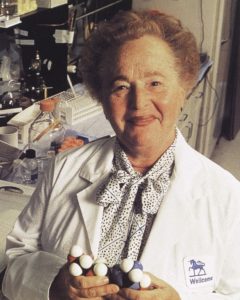 Gertrude Belle Elion was a Nobel Prize-winning American biochemist and pharmacologist who was responsible for developing many life-saving drugs that we still use today.
Gertrude Belle Elion was a Nobel Prize-winning American biochemist and pharmacologist who was responsible for developing many life-saving drugs that we still use today.
Born in New York City in 1918, Elion’s career as a chemist was inspired by the death of her grandfather from cancer. From that moment on, she vowed to find a cure for the disease. She graduated from Hunter College in 1937 with a degree in chemistry as well as from New York University with a Master of Science in 1941. She applied for many fellowships, but they were all turned down due to a massive gender bias. Unable to obtain a graduate research position, she started work as a food quality supervisor at a supermarket and for a food lab in New York, testing things like the acidity of pickles and the color of egg yolk going into mayonnaise.
World War II came around and created more workplace opportunities for women which became Elion’s way of breaking through. In 1944, she was hired at Burroughs-Wellcome (now GlaxoSmithKline).
The rest was history. She went on to develop 45 treatments that help the immune system overcome cancer, organ transplants, Herpes virus, among others. Her greatest contribution may have been Purinethol, the first major drug used to fight leukemia.
29. Charlotte Ellertson: Sociologist and Public Health Researcher
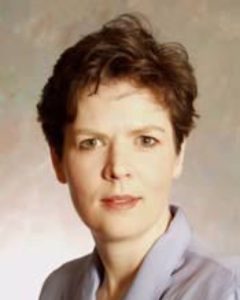 Charlotte Ellertson devoted her career to women’s reproductive rights research and advocacy. Growing up in South Africa, she became interested in women’s health to be when she realized that many women around the world were unable to make their own decisions about their own health and bodies. so she decided to make a career out of this passion.
Charlotte Ellertson devoted her career to women’s reproductive rights research and advocacy. Growing up in South Africa, she became interested in women’s health to be when she realized that many women around the world were unable to make their own decisions about their own health and bodies. so she decided to make a career out of this passion.
In 2002 she founded the non-profit Ibis Reproductive Health, which was an international women’s reproductive rights research and advocacy group. The focus of the group is to increase access to safe abortion, expand contraceptive access and choices, and integrating HIV and comprehensive sexual and reproductive health services.
30. Margaret Sanger: Activist, Writer, Nurse
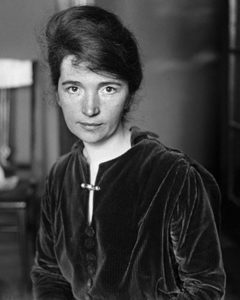 Margaret Sanger was a feminist and activist who was a lifelong advocate for women’s rights. She coined the term “birth control” and worked towards its legalization. She opened the first birth control clinic in the United States and she founded the American Birth Control League, which would eventually evolve into the Planned Parenthood Federation of America.
Margaret Sanger was a feminist and activist who was a lifelong advocate for women’s rights. She coined the term “birth control” and worked towards its legalization. She opened the first birth control clinic in the United States and she founded the American Birth Control League, which would eventually evolve into the Planned Parenthood Federation of America.
In 1910, Sanger moved to the Lower East Side where she worked as a nurse. She helped countless women who underwent frequent childbirth, miscarriages, and self-induced or botched abortions for a lack of information on how to avoid unwanted pregnancy. At the time, access to information on contraception was prohibited on grounds of Obscenity by the 1873 federal Comstock law. Sanger went on a mission to empower women with the information anyway and started a publication called The Woman Rebel which promoted a woman’s right to birth control. The monthly publication got her in trouble, as sending out information on contraception through the mail was illegal, and she was forced to flee the county. A few years later, when she returned, she opened the first birth control clinic in the U.S.




